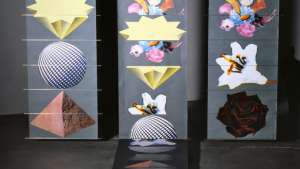From the Series
Matthew Carter is a type designer with some 50 years' experience. He has designed some of the world's most recognised fonts. At Design Indaba Conference 2013 he gave the backstories to some of the unusual typefaces he has designed.
Carter first spoke about his Mantinia project. One of the inspirations behind the typeface is lettering in paintings and engravings of Renaissance artist Andrea Mantegna. The typeface saw a manipulation of Roman alphabet letters in order to join them together and merge two letters into one. “The typeface is unusual. It includes ligatures that are not part of our typographic tradition but rather of the epigraphic tradition derived from inscriptions,” says Carter. What Carter refers to as primitive forms of advertising – lettering on buildings as well as ligatures on 17th century gravestones – also provided inspiration for this project.
It’s seldom that an influence comes to me as a single, pure form. It’s always a mess, says Carter
A few years later Carter discovered that the popular magazine Rolling Stone used his Mantinia typeface on one of its covers as well as on a series of posters.
Musicians like to get their faces on the cover of Rolling Stone. So do type designers, adds Carter
The new identity for the Walker Art Center in Minneapolis saw one of Carter’s most celebrated typefaces to date. Going against the general consensus that a logo is the best way to create and establish a new identity for an institution, Carter instead designed a new and unique typeface that could be used for various purposes. The typeface for the avant-garde gallery served as a signifier of its cultural history and was flexible in all its applications. The typeface was adopted for various other uses around the world, from an exhibition in Tokyo to an in-flight magazine in San Francisco.
Carter has been part of the graphic design council at Yale University for more than 30 years. He was asked to design a unique typeface for the university that would serve two forms: print and street. Using the same typeface but in different weights, Carter’s creation is now used for printing forms as well as signs for university buildings and streets.
There is a paradoxical similarity between the need for a typeface of a very small size and a huge size because you never see a sign up close, you see a sign from a distance and at an angle, says Carter
Carter ends by giving insight into the first wooden typeface he ever designed, highlighting the possibilities found in wooden type.









